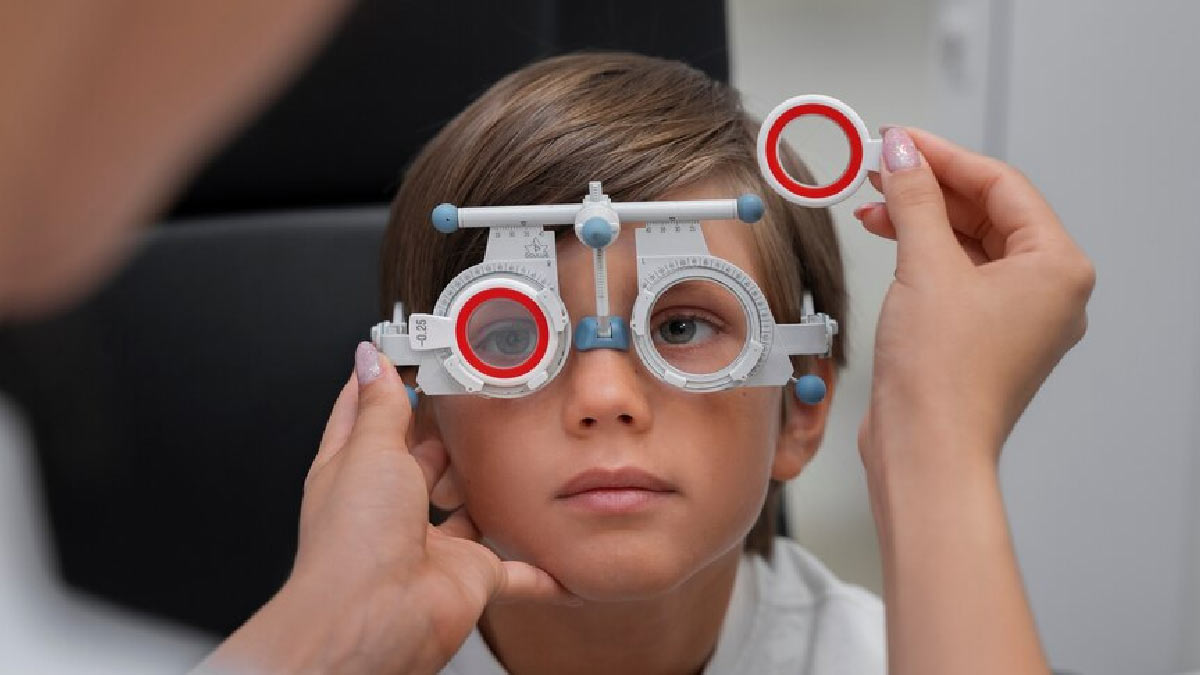
Did you know visual impairment can have severe repercussions on the learning process? The impact of visual impairment goes beyond affecting the academic progress of individuals, posing hurdles in their overall development. Therefore, it is important to understand and address these challenges while emphasising the crucial role of preventive measures in avoiding blindness. We spoke to our expert Dr Rishi Raj Borah, Country Director - India, Orbis, who shared insights on the same.
Table of Content:-
Educational Challenges

Visual impairment can manifest in various forms, ranging from partial vision loss to complete blindness. Individuals with visual challenges face unique challenges in the educational system regardless of their degree of impairment. Dr Borah listed some of the challenges as follows:
One of the primary challenges lies in accessing and processing information. Traditional learning materials, such as printed textbooks and written assignments, become barriers for visually impaired students.
“The classroom environment can pose challenges in terms of mobility and navigation. Navigating through crowded hallways or locating specific classrooms can be daunting tasks for individuals with visual impairments. This not only affects their punctuality but also contributes to feelings of isolation and exclusion”, said Dr Borah.
Another significant challenge is the limited availability of specialised educational resources. Braille books, audio materials and assistive technologies are essential tools for visually impaired learners, but their accessibility remains a persistent issue in many educational settings.
Also Read: Restoring The Vision: Expert Explains Corneal Transplant And Its Impact
Impact On Academic Performance

According to the World Health Organization (WHO), there are 37 million blind people and 124 million visually impaired people in the world. More than 90% of people who are blind or have limited vision reside in developing nations.
The impact of visual impairment on academic performance is evident in lower literacy rates and reduced educational attainment among individuals with compromised vision. Without proper accommodations and support, these students may struggle to keep pace with their peers, leading to a gap in academic achievement.
“Moreover, the lack of inclusive educational practices may contribute to the perpetuation of stereotypes and misconceptions about the capabilities of visually impaired individuals. This further hampers their ability to integrate into mainstream educational environments and society at large”, highlighted Dr Borah.
Role of Preventive Measures

While addressing the challenges faced by those with visual impairments is crucial, it is equally important to recognise the significance of preventive measures in avoidable blindness. Many visual impairments are preventable or treatable through early intervention and proper eye care. Dr Borah listed some of the treatment measures as follows:
- Regular eye examinations, especially during early childhood, play a pivotal role in detecting and addressing potential visual impairments before they significantly impact learning.
- Educational institutions, in collaboration with healthcare providers, can contribute to raising awareness about the importance of routine eye check-ups and the need for timely interventions.
Also Read: Avoid Irreversible Vision Loss: Expert Explains Early Stage Glaucoma And Preventive Tips
Incorporating Inclusive Practices
Dr Borah said, “To create inclusive educational environments, institutions must prioritise the implementation of inclusive practices that cater to the diverse needs of all learners, including those with visual impairments. This involves providing accessible learning materials, adopting assistive technologies and fostering a supportive and understanding community.”
Bottomline
Dr Borah concluded, “By addressing the challenges faced by individuals with visual impairments and prioritising preventive measures, we can create a future where every individual, regardless of their visual abilities, has equal access to quality education. Together, we can build a world where the prevalence of blindness can be reduced, and the potential of every learner is fully realised.”
[Disclaimer: This article contains information provided by a registered expert and is for informational purposes only. Hence, we advise you to consult your expert if you notice any signs of vision impairment to get the necessary treatment.]
Also watch this video
How we keep this article up to date:
We work with experts and keep a close eye on the latest in health and wellness. Whenever there is a new research or helpful information, we update our articles with accurate and useful advice.
Current Version